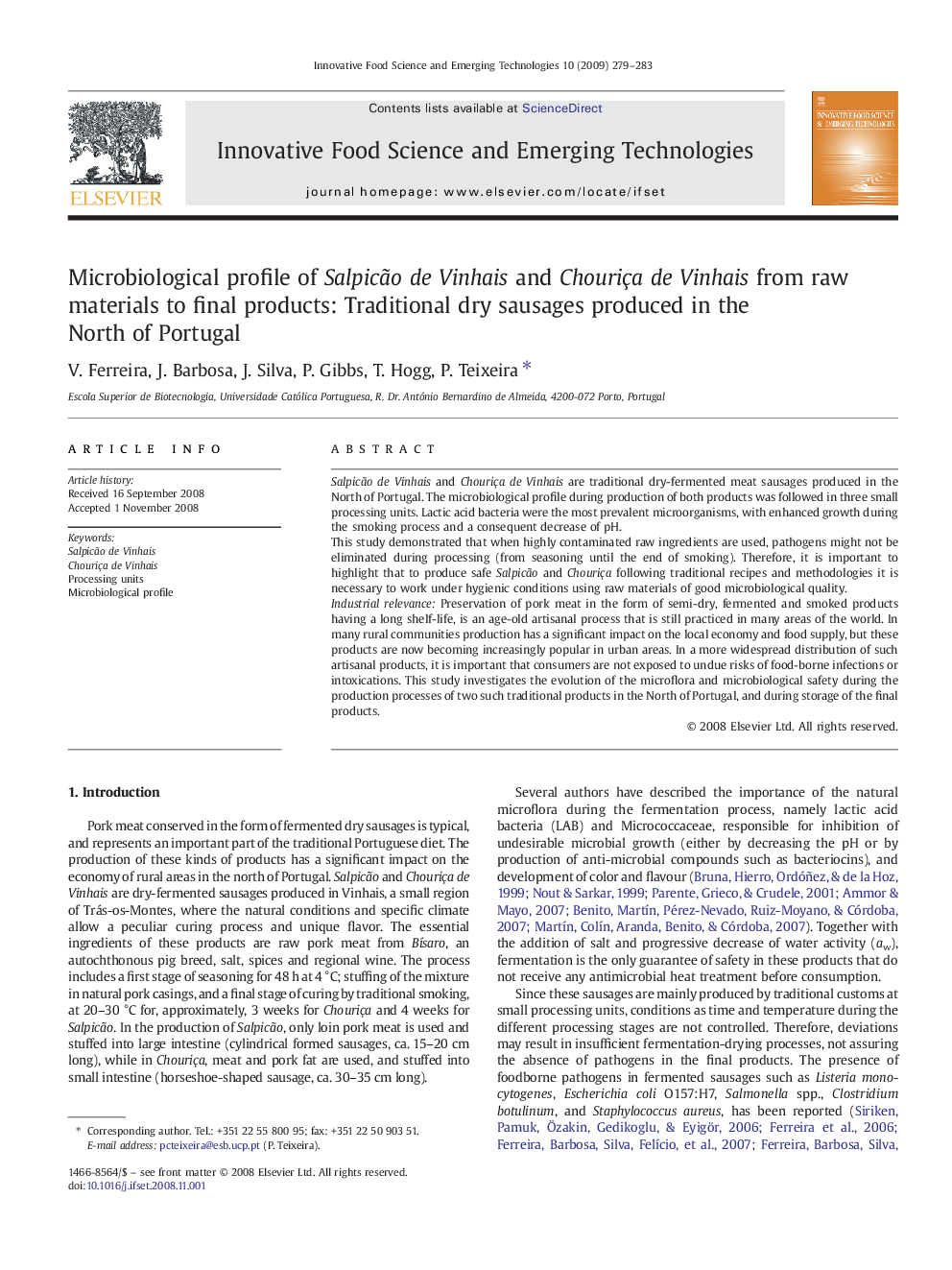| Article ID | Journal | Published Year | Pages | File Type |
|---|---|---|---|---|
| 2087229 | Innovative Food Science & Emerging Technologies | 2009 | 5 Pages |
Salpicão de Vinhais and Chouriça de Vinhais are traditional dry-fermented meat sausages produced in the North of Portugal. The microbiological profile during production of both products was followed in three small processing units. Lactic acid bacteria were the most prevalent microorganisms, with enhanced growth during the smoking process and a consequent decrease of pH.This study demonstrated that when highly contaminated raw ingredients are used, pathogens might not be eliminated during processing (from seasoning until the end of smoking). Therefore, it is important to highlight that to produce safe Salpicão and Chouriça following traditional recipes and methodologies it is necessary to work under hygienic conditions using raw materials of good microbiological quality.Industrial relevancePreservation of pork meat in the form of semi-dry, fermented and smoked products having a long shelf-life, is an age-old artisanal process that is still practiced in many areas of the world. In many rural communities production has a significant impact on the local economy and food supply, but these products are now becoming increasingly popular in urban areas. In a more widespread distribution of such artisanal products, it is important that consumers are not exposed to undue risks of food-borne infections or intoxications. This study investigates the evolution of the microflora and microbiological safety during the production processes of two such traditional products in the North of Portugal, and during storage of the final products.
